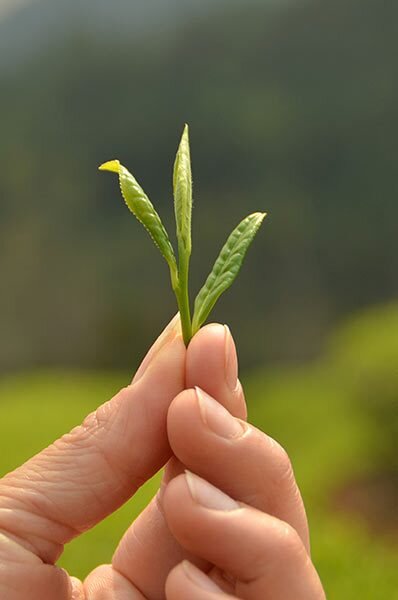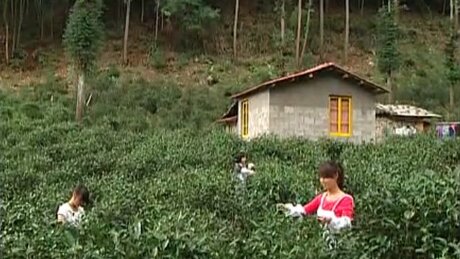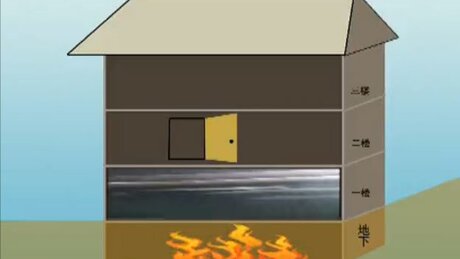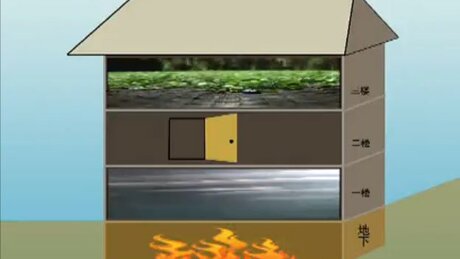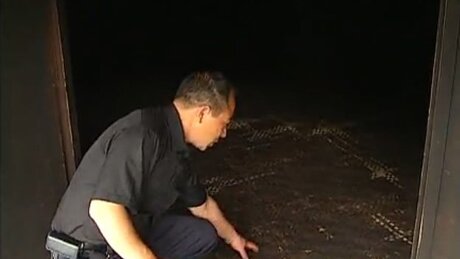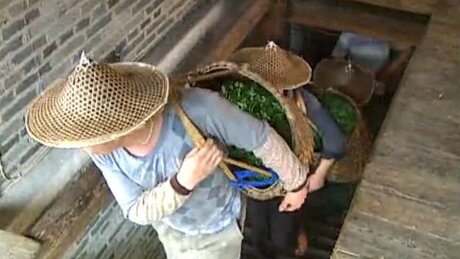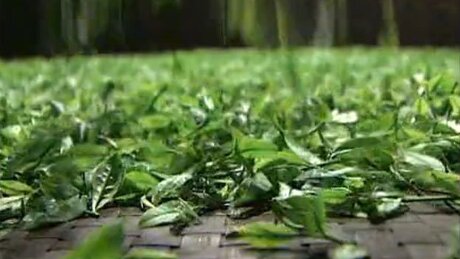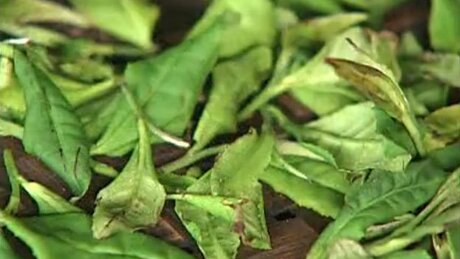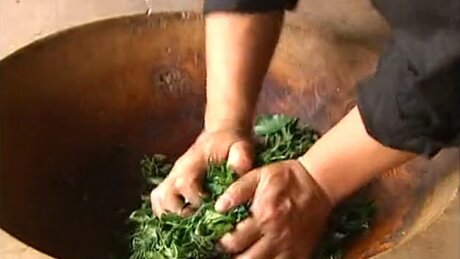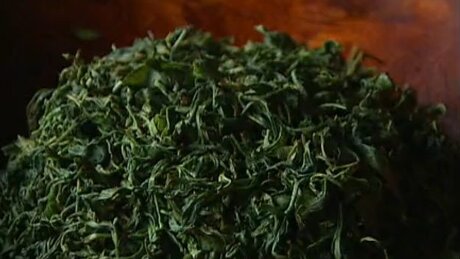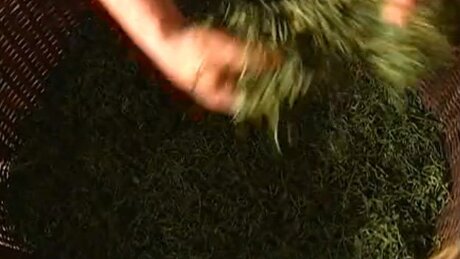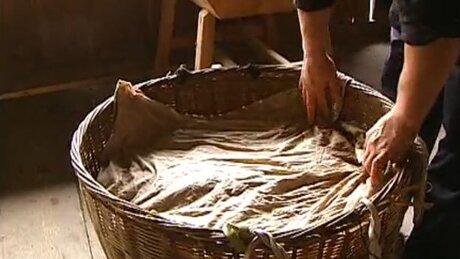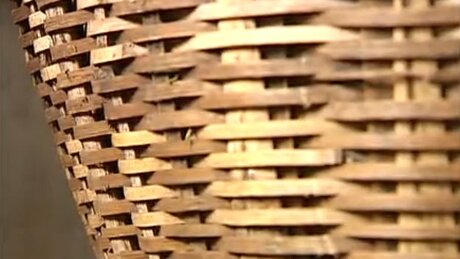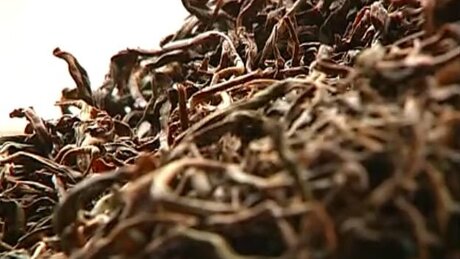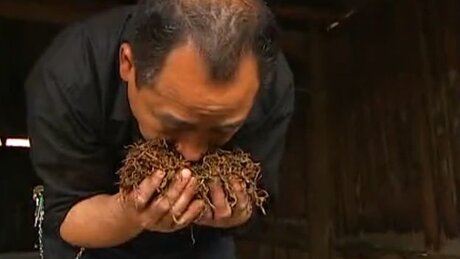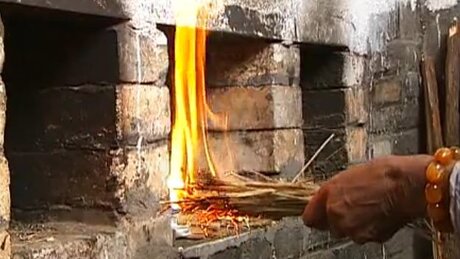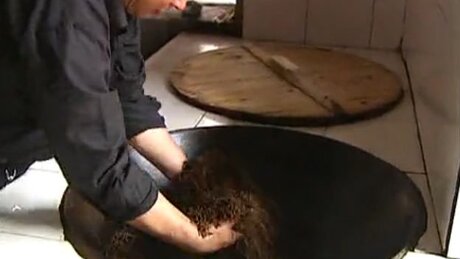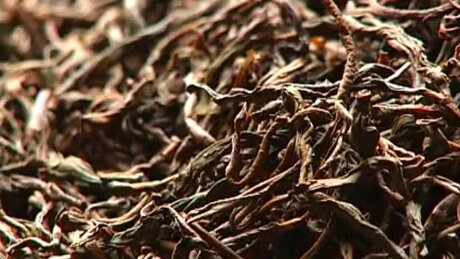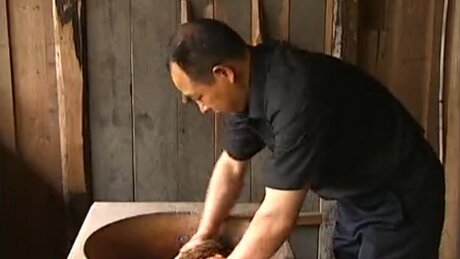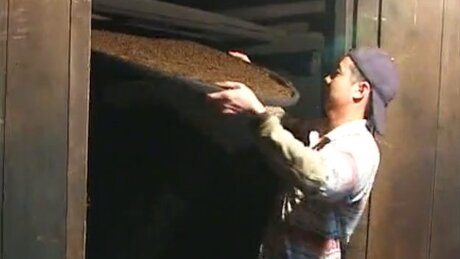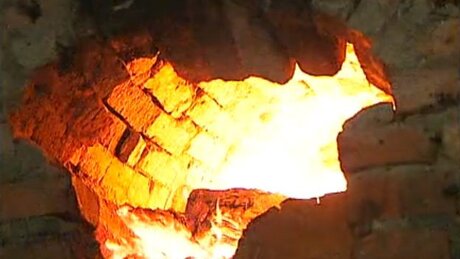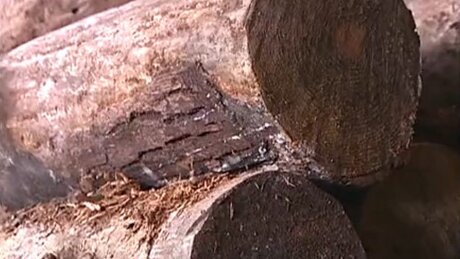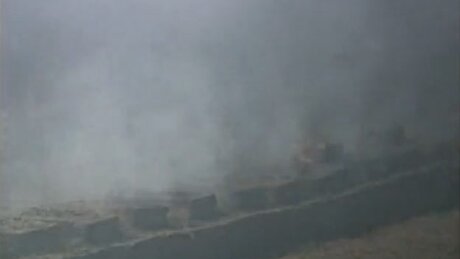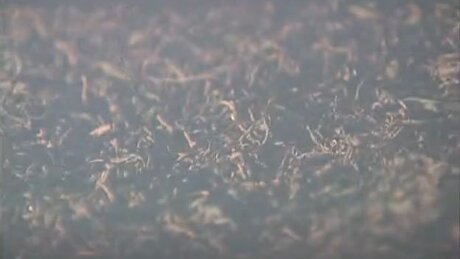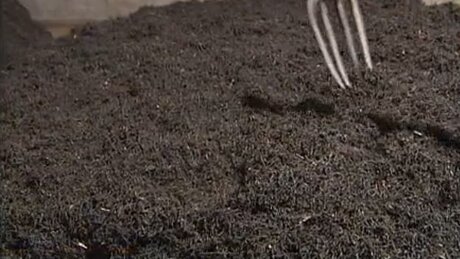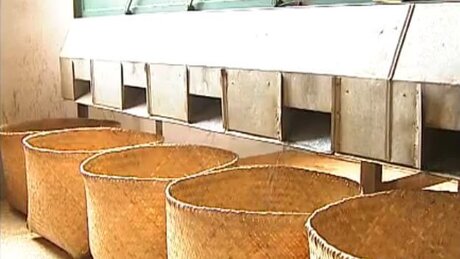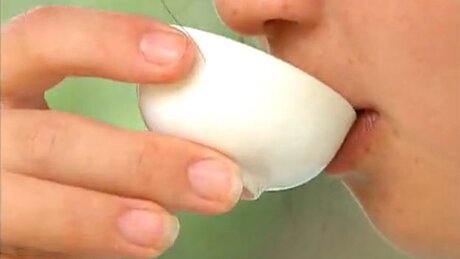This production method could develop of itself in the course of tea makers’ routine life, but China has a legend about the appearance of the extraordinary smoked tea.
It is told that once a squad of military men arrived to a village in Wuyi mountains where tea makers lived. They requested food and tea this village was so famous of. But the tea had not dried yet. Nothing was there to offer to the uninvited guests. The owner of the tea factory, being afraid to displease the visitors, decided to finish drying of the leaves on the fire. The fire was made of the pinewood and certain amount of tea was dried on its fumes. The resulting taste was smoky, with unusual savor. The soldiers liked the tea and praised the tea factory owner. He, in his turn, considered: if soldiers liked the tea so much, may be it will hit the taste of others as well. And so it happened that the popularity of smoked tea has spread all over China, it was imported to Europe and there was no end to clients. Since that time only smoked red tea is produced in the mountains.
By the way its only Wuyi mountains where smoked tea is produced. Perhaps in other region the tea leaf reacts differently to the smoking procedure. A huge amount of smoked tea is produced at a small area and is distinguished into a stand-alone red tea category.
In Europe the tea is popular under the name «Lapsan Souchong», which basically is spelled in local dialect and anglicized old name of the tea Lao Song Xi Zhong (老松细种). However there is some phonetic similarity. It translates as «Small bush of old pine». Now the tea is generally known in China under the name «Small bushes from Zhengshan mountain». But the phrase «small bushes», in Chinese «xiao zhong» remains unaltered and is used for nomination of smoked teas.
There is only one area where smoked tea is produced — the north of Fujian province, close to Wuyi mountains in Tong Mu nature reserve.
The tea grows in ecologically balanced environment at misty altitudes near 1600 meters above sea level.
Tea for smoking is gathered from April 18 and by the end of May. It is produced once per year — in spring.
For production of xiao zhong special three-level buildings are used. At the lower level the wood is burned and smoke gathers up.
The hatch at the second level allows to adjust smoking temperature. The tea is placed on the third level.
The floor surface where the tea is spread is vent-holed all over — as a sieve. This enables smoke to penetrate the level and to enveil the tea leaves.
Upon gathering the tea needs resting to remove the excessive moisture and soften the leaf. This is done on the third level.
The tea is laid out at the floor for several hours. Each 15 minutes the tea is swept up and laid out again to make withering more even.
Duration of this stage depends heavily on weather conditions: rainy or dry. In 4–5 hours tea is ready for further processing.
Traditional rolling takes place in a bowl made of wood. A tea maker squeezes and rolls the leaves until they become soaking wet all over.
The leaves turn into thin bands, tea sap is expressed from every part of the tea leaf. This enables complete fermentation of the tea.
It is covered with canvass. This allows increasing temperature inside the tea pile and ensuring uniform contact of the leaf with oxygen.
Oxygen is essential in the fermentation process, which is literally the oxidation of the tea sap. The tea acquires red color.
Tea maker determines the completion of the production stage by appearance and odor of the leaf. The process takes up to 3–5 hours.
Literally «red pot» implies frying of the leaf on in the pot heated to 200°C in order to stop fermentation process.
The tea is dried. At this stage it is but ordinary red tea. However for xiao zhong it’s just the middle of the way.
Only pinewood may add this noble smoky flavor to the tea. The area is rich of pine forests and there’s no need to use other types of wood.
And cloaks over the tea leaves. The tea dries up in 10 hours. But so far it is still máo chá — the primary tea.
Sorting is an essential stage. Tea produced at one time is separated by quality and value. At fist machines screen the tea by size.
Final sorting is performed by human. All foul tea leaves — improperly fermented, sized or twisted — are removed.
Naturally it is brewed at water temperature 100°C. This tea is both an excellent choice for single brewing in a large cup and quite sapid to enjoy in multiple steepings. You may brew it in gaiwan, porcelain or clay tea pot. The scent and flavor of this red tea associate with masculine energy and martial force so coarse tea-ware would therefore be more aesthetically appropriate.
Since «Small bushes» is produced of large leaves, undergo intensive processing and in the end thereof is smoked, this tea is well suited for aging. Over time it loses its fresh notes while acquiring more deep and versatile flavor. In any case it’s better to store it tightly sealed away from sunlight, as far as sunshine and air may soon deaden the flavor and aroma of the tea.
Illustrated by screenshots from film 正山小种制作工艺.

